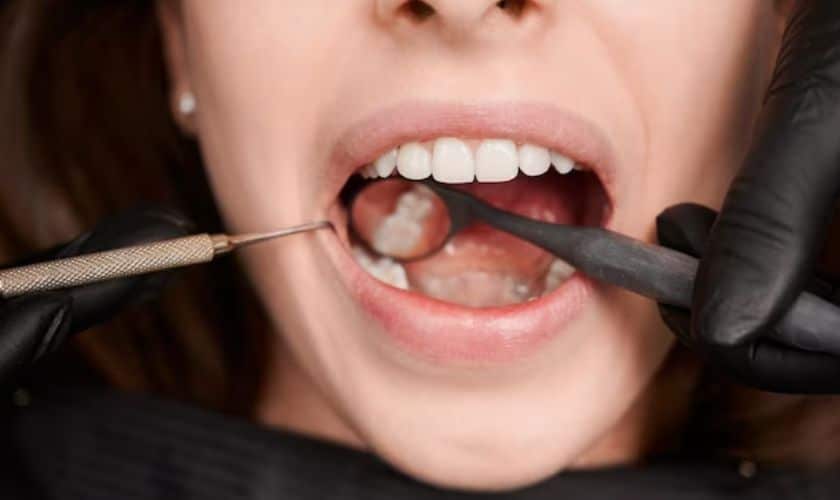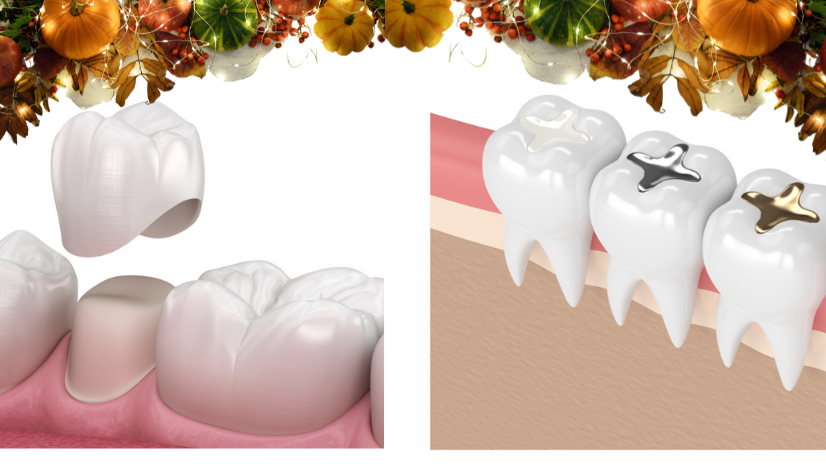
Welcome to the world of dental fillings, where the secret to strong and healthy teeth is uncovered. Dental fillings play a crucial role in restoring the integrity and functionality of damaged teeth. They are a reliable and effective solution for treating cavities, cracks, and other dental issues. In this introduction, we will delve into the world of dental fillings, exploring their purpose, benefits, and the process involved. From traditional amalgam fillings to modern tooth-colored composite fillings, we will explore the various options available. Get ready to uncover the secret to maintaining a radiant smile and preserving your oral health with dental fillings.
Dental Fillings: Overview
Dental fillings are a common and essential dental procedure used to restore teeth damaged by decay, fractures, or other structural issues. The goal of dental fillings is to remove the damaged portion of the tooth and replace it with a filling material to restore its shape, strength, and function. These fillings can be made from various materials, including amalgam, composite resin, porcelain, or gold. Each type of filling has its advantages and considerations. During the procedure, the dentist will clean the affected area, remove the decayed or damaged tooth structure, and carefully fill the space with the chosen filling material. Dental fillings are a reliable solution for preserving the tooth’s integrity and preventing further dental problems.
Factors leading to Dental Fillings
1. Treating Dental Decay (Cavities): One of the primary reasons for dental fillings is to address dental decay or cavities. When bacteria erode the enamel, it creates small holes in the teeth. Dental fillings remove the decayed portion and fill the space with a suitable material, preventing further decay and restoring the tooth’s function.
2. Repairing Chipped or Cracked Teeth: Dental fillings are also used to repair teeth chipped, cracked, or damaged due to trauma or injury. Fillings help to restore the tooth’s shape, structure, and strength, preventing further damage and improving the appearance of the affected tooth.
3. Enhancing Aesthetics: Dental fillings can be used for cosmetic purposes to improve the aesthetics of teeth. They can be applied to fill gaps between teeth, reshape irregular teeth, or address minor imperfections, resulting in a more visually appealing smile. Tooth-colored composite fillings are commonly used for cosmetic enhancements as they blend seamlessly with the natural tooth color, providing a natural-looking result.
The Process
1. Examination and Diagnosis: The dental filling procedure begins with a dentist’s thorough examination of the tooth. They will assess the extent of decay or damage and determine if a filling is the appropriate treatment option.
2. Local Anesthesia: To ensure a comfortable experience, local anaesthesia is administered to numb the area surrounding the tooth undergoing the filling. It helps to minimize any potential pain or discomfort during the procedure.
3. Removal of Decay or Damaged Tooth Structure: The dentist will use specialized dental instruments to remove the decayed or damaged portion of the tooth carefully. This process eliminates all affected areas, creating a clean surface for the filling material.
4. Filling Material Application and Shaping: Once the tooth is prepared, the chosen filling material, such as amalgam or composite resin, is applied to the cavity or damaged area. The material is carefully shaped and molded to match the natural contours of the tooth, ensuring a comfortable bite and a natural appearance.
5. Polishing and Final Adjustments: After the filling material has been placed and shaped, the dentist will smooth and polish it to achieve a natural-looking finish. Any necessary adjustments are made to ensure proper alignment and bite. The final result is a restored tooth that is functional, durable, and aesthetically pleasing.
Positive Aspects of Dental Fillings
1. Restoring Tooth Functionality: Dental fillings are crucial in restoring the functionality of teeth affected by decay or damage. By filling the cavities or repairing the damaged areas, fillings allow you to chew and bite properly, ensuring that your teeth can perform their essential functions without discomfort or impairment.
2. Improving Aesthetics and Smile Confidence: Dental fillings can also enhance the aesthetics of your smile. Tooth-colored composite fillings blend seamlessly with the natural color of your teeth, creating a more natural and appealing appearance. By addressing issues like cavities, chips, or gaps, fillings can boost your smile confidence and help you feel more comfortable and self-assured.
3. Long-Term Durability and Effectiveness: Dental fillings are designed to be durable and long-lasting. Modern filling materials, such as composite resins and ceramics, offer excellent strength and durability, with the potential to withstand the forces of daily biting and chewing. With proper care and regular dental check-ups, dental fillings can restore and protect your teeth for many years, promoting optimal oral health and preventing further dental problems.
Caring For Your Restored Smile
1. Maintain Good Oral Hygiene: Proper oral hygiene practices are essential for dental fillings. Brush your teeth at least twice daily with a soft bristle and fluoride toothpaste. Floss daily to remove plaque and debris between teeth, including around the fillings. It helps prevent decay and maintains the overall health of your teeth and gums.
2. Regular Dental Check-ups: Schedule regular dental check-ups and cleanings with your dentist. They can monitor the condition of your fillings, assess their integrity, and identify any signs of wear or potential issues. Professional cleanings help remove plaque and tartar buildup, ensuring optimal oral health and longevity of the fillings.
3. Avoid Harmful Habits: Be mindful of habits potentially damaging dental fillings. Avoid biting or chewing on hard objects like ice, pens, or fingernails, as this can cause cracks or fractures in the filling material. If you grind or clench your teeth, discuss wearing a nightguard with your dentist to protect the fillings and prevent additional damage.
In conclusion, dental fillings are an essential dental treatment that restores and preserves the health and integrity of your teeth. By addressing cavities and tooth decay, fillings prevent further damage and provide a strong foundation for a healthy smile. With proper oral hygiene and regular dental check-ups, you can enjoy the benefits of dental fillings and maintain a confident and beautiful smile for years to come.
FAQs:
1. Are dental fillings painful?
Dental fillings are typically not painful during the procedure since local anaesthesia is used to numb the area. However, it is normal to experience some sensitivity or mild discomfort after the anaesthesia wears off. Over-the-counter pain relievers can help manage any post-treatment discomfort.
2. Can I eat normally after getting dental fillings?
Yes, you can typically eat normally after getting dental fillings. However, waiting until the anaesthesia wears off completely is advisable to prevent accidentally biting your cheek or tongue. Additionally, if your filling is composite resin, your dentist may recommend avoiding hard or sticky foods for the first 24 hours to allow the filling to harden fully.
3. Can I replace my old silver amalgam fillings with tooth-coloured fillings?
Yes, replacing old silver amalgam fillings with tooth-coloured fillings, such as composite resin, is possible. Many people choose this option for aesthetic reasons, as tooth-coloured fillings blend in with the natural tooth colour. However, it is important to consult your dentist to determine if the replacement is necessary and appropriate for your situation.


